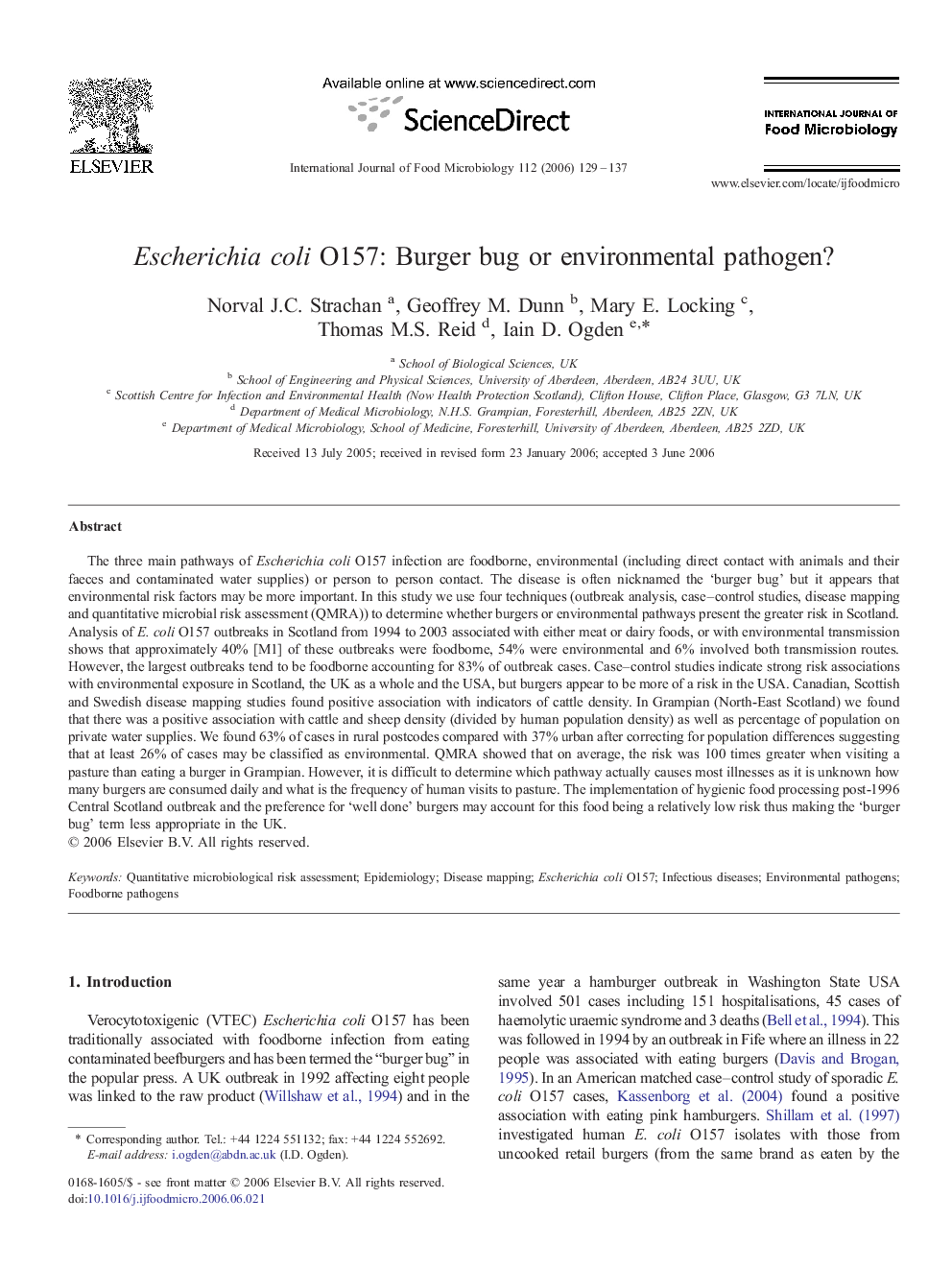| کد مقاله | کد نشریه | سال انتشار | مقاله انگلیسی | نسخه تمام متن |
|---|---|---|---|---|
| 4369937 | 1616758 | 2006 | 9 صفحه PDF | دانلود رایگان |

The three main pathways of Escherichia coli O157 infection are foodborne, environmental (including direct contact with animals and their faeces and contaminated water supplies) or person to person contact. The disease is often nicknamed the ‘burger bug’ but it appears that environmental risk factors may be more important. In this study we use four techniques (outbreak analysis, case–control studies, disease mapping and quantitative microbial risk assessment (QMRA)) to determine whether burgers or environmental pathways present the greater risk in Scotland. Analysis of E. coli O157 outbreaks in Scotland from 1994 to 2003 associated with either meat or dairy foods, or with environmental transmission shows that approximately 40% [M1] of these outbreaks were foodborne, 54% were environmental and 6% involved both transmission routes. However, the largest outbreaks tend to be foodborne accounting for 83% of outbreak cases. Case–control studies indicate strong risk associations with environmental exposure in Scotland, the UK as a whole and the USA, but burgers appear to be more of a risk in the USA. Canadian, Scottish and Swedish disease mapping studies found positive association with indicators of cattle density. In Grampian (North-East Scotland) we found that there was a positive association with cattle and sheep density (divided by human population density) as well as percentage of population on private water supplies. We found 63% of cases in rural postcodes compared with 37% urban after correcting for population differences suggesting that at least 26% of cases may be classified as environmental. QMRA showed that on average, the risk was 100 times greater when visiting a pasture than eating a burger in Grampian. However, it is difficult to determine which pathway actually causes most illnesses as it is unknown how many burgers are consumed daily and what is the frequency of human visits to pasture. The implementation of hygienic food processing post-1996 Central Scotland outbreak and the preference for ‘well done’ burgers may account for this food being a relatively low risk thus making the ‘burger bug’ term less appropriate in the UK.
Journal: International Journal of Food Microbiology - Volume 112, Issue 2, 1 November 2006, Pages 129–137